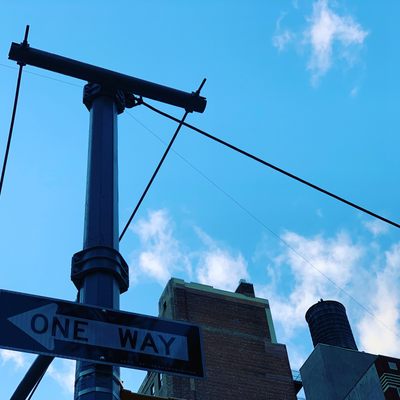About
An eruv is a symbolic boundary that allows observant Jews to carry out a range of ordinary activities otherwise forbidden on the Shabbat. There are eruvin in more than 30 states in the U.S., but Manhattan’s is one of the longest in the world. A nearly invisible wire runs from 126th Street in Harlem, down to Battery Park and back up to 111th along the East River. The line has been in place, in some form or another, for just over a century.
From just before dusk on Friday to just after dusk on Saturday, observant Jews are prohibited from performing many basic activities, and the observance of this law has been updated over time to reflect current technologies, such as cars, electricity, and keys. “Carrying from one domain to another,” or moving objects between public and private areas, for example, is forbidden.
Eruvin (the plural of eruv) transcend this restrictive rule by serving as a symbolic border that links together many private spaces in the community, which in turn permits people to ferry around keys, children, and canes, or push wheelchairs and strollers.
The term “eruv” is derived from the Hebrew word for “mixture,” and in Manhattan it’s a fitting title: The line encircling much of the island is a patchwork formed by 20 years of breaks and repairs in the line. It’s only since the late ’90s that there has been a structured system for its maintenance. An early version surrounded the whole island, but no one seemed to know its precise boundaries, and everyone just sort of assumed someone else was in charge of maintaining it. When a group of rabbis in the ’80s took a boat around Manhattan to create a map, they realized that most of the wire was gone. Now it’s more tightly regulated, and subsidized by the community it helps to create.
For six days of the week, or to passersby outside the community, the eruv is just a simple, more or less invisible, set of strands across physical space. But during Shabbat, the holy day, it takes on an important meaning for those who rely on the symbolic border to expand the domain of their homes while staying true to their belief system.
Related Tags
Know Before You Go
The map coordinates above will take you one of the most northeasterly borders of the eruv. To the west it goes up to 129th Street. Heading south from there, it hugs the coasts on either side of Manhattan almost all the way down to Battery Park. Between 56th and 26th streets it dips into the island, avoiding Hell's Kitchen and the Garment District.
Published
October 26, 2017


































